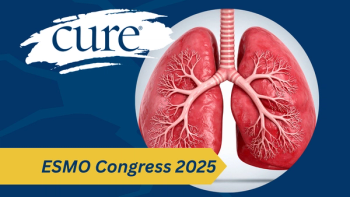
Survey Asks Why Some Ovarian Cancer Patients Choose Maintenance Therapy
Many patients who completed the survey felt maintenance therapy would help them buy time.
What do people who have primary and recurrent ovarian cancer expect from maintenance therapy? A survey of about 1,950 people who chose to move forward with maintenance therapy revealed that most of them were expecting to buy time — at least 6 months’ delay in disease progression.
Maintenance therapy is based upon the understanding that patients achieving clinical remission following surgery and chemotherapy for ovarian cancer have a 60 to 70 percent chance of developing recurrent disease with 2 years, according to Jalid Sehouli, M.D., of the Charité Universitätsmedizin Berlin in Berlin, Germany. Several clinical trials have shown promise with various drugs but guidelines are still under development.
“We wondered what was important in choosing to undergo maintenance therapy and decided to ask the patients themselves,” Sehouli said.
The survey was disseminated to patients participating in the randomized double-blind trial.
Patients with ovarian cancer were unified in their responses regardless of age, disease stage, or whether they had primary or recurrent disease, and were more likely to opt to receive maintenance therapy if it could offer delay of disease progression and allow patients to maintain or improve their quality of life (QoL), according to findings from a survey reported at the European Society of Gynaecological Oncology (ESGO) 2017 Congress.
The Survey
In all, 1,954 patients from centers in 10 European and Eastern European countries responded to the survey. The majority (67 percent) was aged 51 to 70 years. Primary ovarian cancer was diagnosed in 49.6 percent of patients, 36.3 percent had relapsed ovarian cancer and the disease stage was unknown for 6.9 percent of respondents. The International Federation of Gynecology and Obstetrics (FIGO) stage of the primary disease was 3 to 4 in 43.7 percent of respondents, unknown in 32.1 percent, and 1 to 2 in 14.3 percent. Most respondents (64.3 percent) were currently undergoing treatment, but this treatment consisted of a maintenance regimen for just 29.3 percent.
Regarding living situation, 81.7 percent of respondents did not live alone, and 61.4 percent said that they took tablets daily for comorbidities. Of these, patients reported that they took a mean of 3.3 tablets (range, 5 to 35 tablets) per day.
“Comedication and patient age do not seem to negatively influence patients’ preference towards maintenance therapy,” Sehouli noted.
The investigators found that patient age, prior surgery and living situation did not associate significantly with the respondents’ choice to undergo maintenance therapy.
However, patients receiving maintenance therapy had FIGO stage 3 to 4 disease at the primary diagnosis significantly more often, and also had recurrent disease.
However, age did play a role in disease management. Whereas there was no difference between older and younger patients receiving chemotherapy for their disease, fewer patients aged 70 years and older underwent surgery for their tumor. In addition, patients aged 70 or more years were more likely to live alone, and more often had FIGO disease stage 3 to 4. Patients in this age group also took significantly more tablets daily for co-morbidities.
Few Respondents Reported Bad Health Status
“Only a few patients under maintenance therapy described their health status as bad,” said Sehouli.
A positive note resounded when just 2 percent and 7 percent of patients currently undergoing maintenance therapy regarded their current state of health as very bad or bad, respectively. Most patients (37 percent) responded neutral, 35 percent said well and nearly 20 percent of patients described their current health status as very well.
Buying Time
Regarding patients’ expectation for maintenance therapy, 50 percent of patients with recurrent disease and 45 percent of patients with primary disease responded that they anticipated maintenance therapy to prevent disease progression for 6 months, and this expectation was similar in both older and younger patients. Just over 30 percent of primary cancer patients and 20 percent of patients with recurrent disease expected maintenance therapy to delay disease recurrence by 6 to 12 months, and fewer than 5 percent of patients with each disease stage anticipated progression delay of 24 to 36 months with maintenance therapy. Again, age played no role in the expectation of disease progression delay with maintenance.
Importantly, the patients expressed preferences for the delivery of maintenance therapy; 42.9 percent of respondents preferred oral tablets, 32.1 percent had no preference and 25 percent of patients preferred intravenous administration. An equal 35 percent of patients preferred a regimen of daily oral therapy and intravenous administration every three weeks. Just under 20 percent of patients preferred twice daily oral administration, 7 percent preferred weekly infusion and less than 3 percent stated they would like an ‘other schedule.’
Concerns About Side Effects
Patients were quite knowledgeable about the types of side effects that could be experienced, and voiced their concerns about which were least tolerable. The side effects of most concern reported by between 35 and 40 percent of patients were polyneuropathy, nausea, hair loss and vomiting. Approximately 25 percent of patients were concerned about fatigue and the risk of infection, while 20 percent of respondents cited edema and high blood pressure as undesirable side effects. Less than 20 percent of patients listed neutropenia, constipation, diarrhea, stomachache, skin rash, anemia and bleeding disturbances as the side effects of most concern. This panel was similar between patients with primary or recurrent disease and among both younger and older patients.
Hoping for a Cure
The personal objective most patients listed for choosing a maintenance therapy were increasing the chance of effecting a cure (75 percent) improved quality of life (QoL; 14 percent), non-deterioration of QoL (40 percent), tumor shrinkage (45 percent of patients with recurrent disease vs 32 percent of primary disease patients) and decreased CA-125 (40 percent or less).
There was a consensus that maintenance therapy should delay tumor progression by 6 or more months; more than 60 percent of patients with primary or recurrent disease, and both older and younger patients expressed this as the main deciding factor for maintenance therapy.
“There is a high need for more information and patient education regarding maintenance therapy goals and side effects,” said Sehouli.





